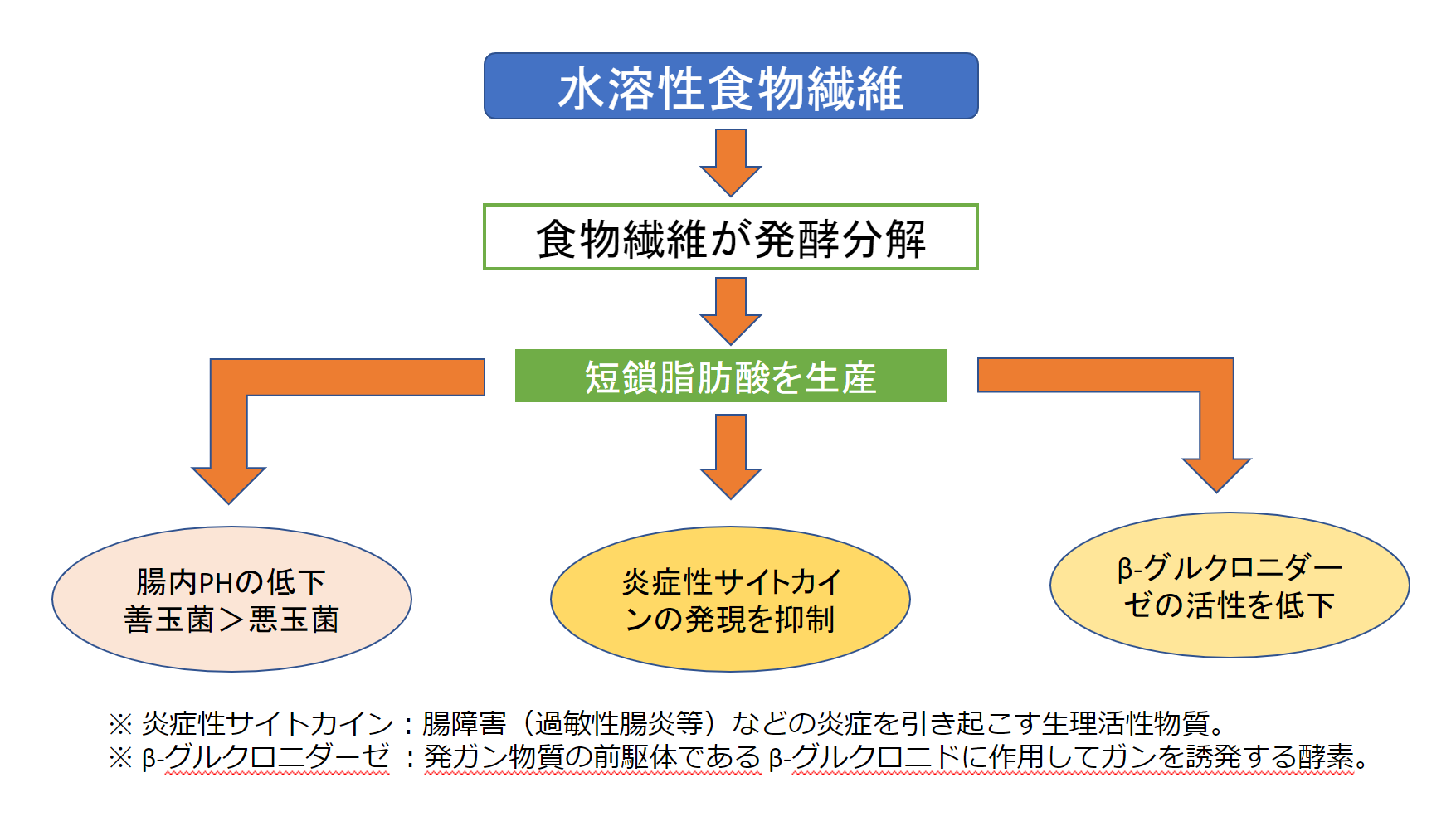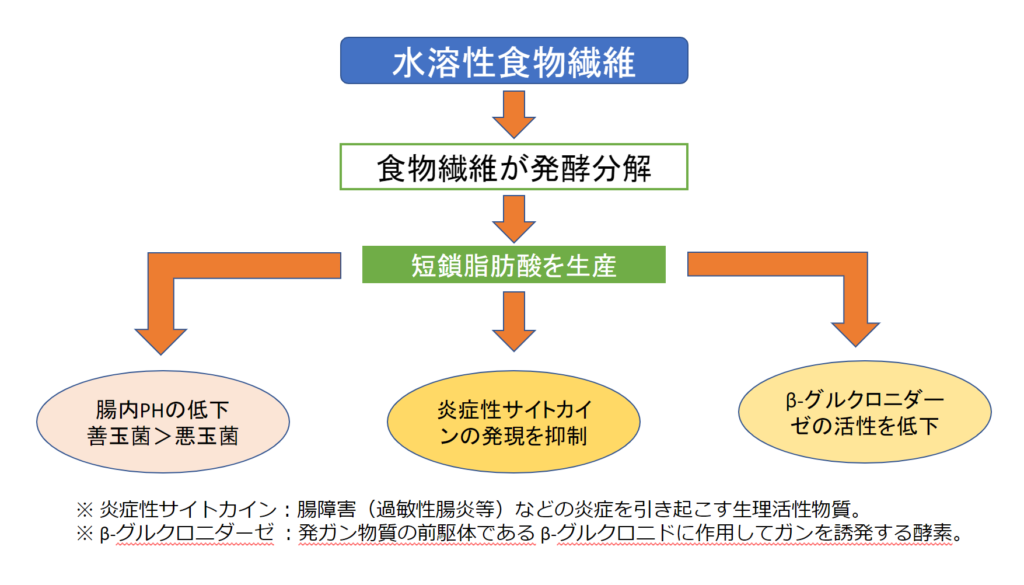筋トレをして筋肉を増やそうと思っている人はどうしてもタンパク質の量を増やしたいところですが、過剰摂取は危険です。
一度に多くのタンパク質を摂取してしまうと消化吸収が出来なくなり、余った(余剰な)のもは分解されて窒素になりやがてアンモニアになります。(オナラがゆで卵のような強烈な臭い。これは要注意です。)
体内の窒素は肝臓・腎臓の働きで尿として排泄されますが、長く続くと内臓疲労を起こしてしまう可能性があります。また、余剰なタンパク質は悪玉菌(腸内細菌で悪者)のエサになってしまい腸内環境を乱してしまします。
食べたものは、主に「胃」と「十二指腸」で分解され「小腸」で大部分の栄養素が吸収されます。そして吸収されきれなかったものは大腸に運ばれ(大腸では、ナトリウム、カリウムを吸収、大腸菌で食物繊維の分解)水分を吸収して便を作ります。これが消化吸収のメカニズムです。
これでおわかりのように、PFCバランスを整えて良い食事を摂っても、腸内環境が悪ければ栄養素は体内にうまく吸収されないのです。
腸内環境を整える「腸内細菌」の種類と働き
腸内細菌には「善玉菌」「悪玉菌」「日和見菌(ひよりみきん)」の3種類があり、健康な人であれば、善玉菌20%、悪玉菌10%のバランスになっています。残りの70%は「日和見菌」といって、良い働きも悪い働きもする菌種です。
「日和見菌」は優柔不断な菌で「善玉菌」か「悪玉菌」のいずれか多い方の味方になってしまうのです。
「善玉菌」が多い人は腸内環境も良く、太らないことが研究で明らかになっています。
そして、これは「短鎖脂肪酸」が関与しているとも言われています。
善玉菌を増やして短鎖脂肪酸を生産する
ヨーグルトなどの乳酸菌は「善玉菌」です。善玉菌は食物繊維をエサにして増えるので、乳酸菌とともに食物繊維が豊富に含まれる食品は取り入れるようにしましょう。
【食物繊維が豊富に含まれる食品】
玄米、ゴボウやアスパラガス、キャベツなどの野菜類、バナナやグレープフルーツなどの果物、大豆や納豆などの豆類、シイタケやエノキなどのキノコ類、サツマイモやコンニャクなどのイモ類、わかめやひじきなどの海藻類
発酵食品を積極的に取り入れると、「短鎖脂肪酸」を作り出す「善玉菌」を活性化します。
【発酵食品】
味噌、しょう油、納豆、酢、ヨーグルト、チーズ、キムチ、漬物、粕漬け、日本酒など
日本酒っていいのと思われるかもしれませんが、「日本酒ダイエット」なんてものもあります。
日本酒はアミノ酸が豊富で大量に飲まなければ「百薬の長」ですよ。純米酒に限りますけどね!
面白いので、またの機会に記事にします。
短鎖脂肪酸を増やす水溶性食物繊維
短鎖脂肪酸とは、腸内細菌が作る、酪酸、プロピオン酸、酢酸などの有機酸のことなのです。
水溶性の食物繊維を摂ると、もともと体内にいる腸内細菌がエサにして発酵させて出来るのが短鎖脂肪酸。
短鎖脂肪酸は下図のとおり腸内環境を整えてくれます。
腸内環境を整えると抗癌作用もあるのです。
アメリカでは腸内環境が悪ければ「デブ」になるとの研究結果がある
アメリカの研究で、マウスに太っている人の腸内細菌と痩せている人の腸内細菌を移植した場合、太っている人の腸内細菌を移植したマウスのほうが「デブ」になったとの結果があり注目が集まっているそうです。
「デブ」なりたくない!ですよね!
今回は、腸内環境の整え方でした。
ダイエットシリーズ【その1】から【その5】
ダイエットに必要な具体的な計算方法を記事にしていますので順番に読んでみてください!
〇 ダイエット【その2】1日の消費カロリーを知る
〇 ダイエット【その3】三大栄養素で摂取カロリーを調整する
〇 ダイエット【その4】食事の摂り方
〇 ダイエット【その5】腸内環境を整える


